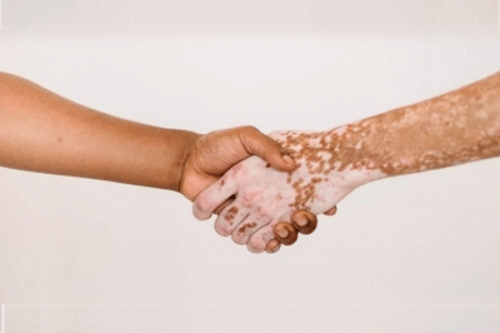Indian subcontinent highest prevalence of vitiligo in the world

Hyderabad, 25 (IANS) The term 'vitiligo', means loss of colour on the skin, causing loss of pigment and melanin. Every year, June 25 is observed as World Vitiligo Day to increase awareness, build a positive approach and normalize vitiligo.
In December 2022, an observation study conducted by the Indian Journal of Clinical and Experimental Dermatology found the Indian subcontinent has the highest prevalence of vitiligo in the world, at about 8.8 per cent.
This year's theme, 'Looking into the future', focuses on paving way for technological advancements in treating vitiligo by end of this decade with an observed effort for increasing healthcare facilities across the country to uphold a positive approach towards vitiligo patients, increasing awareness, breaking social stigma and providing right mental health tools for vitiligo patients to live a de-condemned life.
According to Dr. S. Madhuri, Consultant Dermatologist, KIMS ICON Hospital, Vizag, “The reason for occurrence of this skin disorder is widely unknown. But, it is observed that severe patterns of stress, neurohumoral factors and autoimmune factors have been some contributing factors. Prolonged consumption of protein and copper minerals by Indians are the other major reasons.”
About 40 of patients get vitiligo through family history or drug usage. The most common type of vitiligo,'vulgaris' is found on the lower limbs followed by upper limbs.'
According to Dr. Ravindra Kumar, Consultant General Physician & Diabetologist, Amor Hospital, medication and light-based therapies are the best options to restore the colour of the skin or maybe even out the affected areas. Applying corticosteroid cream to skin might return the colour with no possible side effects.
Phototherapy was introduced in India where a narrow band ultraviolet B (UVB) has shown signs to stop vitiligo. Depigmentation therapy is also done for prolonged months to cure vitiligo. Surgery is considered on occasions when the above options don't work. In the surgical procedure, the following techniques are intended to even out the skin tone. Skin grafting, blister grafting and cellular suspension transplant.
Talking about the life of patients with vitiligo, Dr. Parveen Sultana, Consultant General Medicine, Century Hospital, said, “Vitiligo is classified as an autoimmune disease,a skin disorder distributed equally amongst the Indian diaspora, affecting adults of both sexes and children. However, more women and young females are prone to have this condition. Nearly 50 per cent of females develop it before 20 years of age. 70-80 per cent develop it during 30's.”
Patients possibly experience periods of extended social exclusion from peers and at workplaces, which results in isolation and body image problems. Which is why mental health workshops, awareness programmes and partnerships with global charities happen at schools and offices, to normalize and break the social stigma for those affected with vitiligo - to cultivate an inclusive and positive approach.'
Treatments being studied include a drug to stimulate colour-producing cells. This treatment is currently under development in India, where the treatment is implanted under the skin to promote growth of melanocytes. A drug that helps control melanocytes is also being studied. A gel is being developed for use to restore skin color in people with vitiligo where the disease isn't that widespread. These are the two cost-effective medical advancements that are currently under development in India.
By the end of this decade, treatment options will expand into using robotics technology in therapy options and light rays that are safe for sensitive skin types (white light incorporation). Workplaces and education institutions will increase awareness and best self-help options for all vitiligo patients.

|

|

